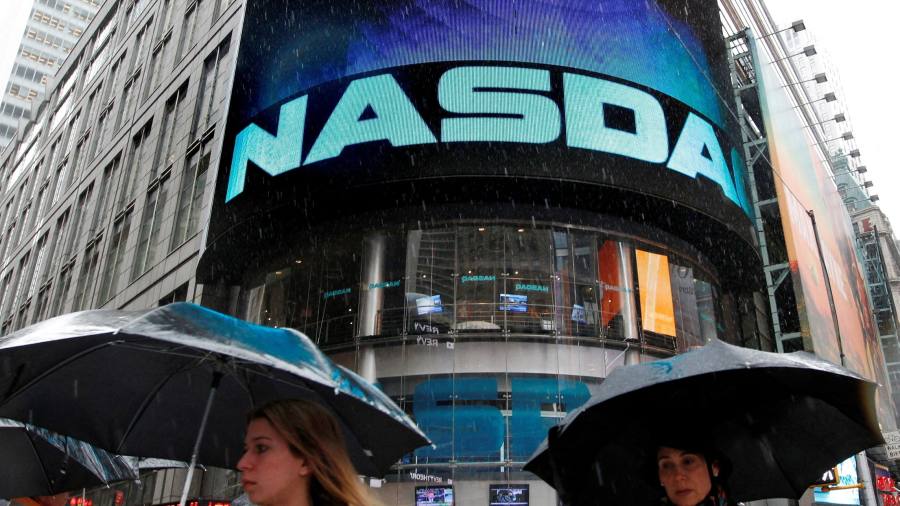Receive free Equities updates
We’ll send you a myFT Daily Digest email rounding up the latest Equities news every morning.
In the comment section below nearly every markets story on this webspace, someone is sounding off about how 13 years of zero-rate financial repression and ultra-loose monetary policy created an everything bubble of excessive risk taking. Friend, this chart’s just for you:
The ski-jump pattern is because, between March and May, the Fed’s balance sheet expanded by nearly $400bn to backstop uninsured bank deposits. While depositor bailouts weren’t exactly QE — it was lending to banks, not buying their securities, so didn’t really create new money — the period still looks quite a lot like QE. The Treasury was draining its general account while unable to issue supply because of the debt-ceiling nonsense.
Banking crisis now averted, QT’s back, but stocks have been insulated because of AI or whatever. US equities look expensive both absolutely and relatively as a result, at 20 times forward earnings versus 14 times for global equities, according to Berenberg. US stocks have only been above 20x twice before, both times during bubbles fuelled by excess liquidity:
“The entirety of the global and US equity rallies has been about higher valuations, and to an unusual degree,” says Morgan Stanley’s Andrew Sheets. “Over the last 25 years, only twice have we seen more year-to-date multiple expansion — in 2009 and 2020. Both of those years saw deep recessions met by enormous easing, supporting the case that valuations should expand ahead of an (eventual) longer-run rebound. That does not describe 2023.”
It’s also worth noting how weird the multiple expansion has been. For everything other than the big-tech seven, earnings expectations have been falling sharply:
Now disinflation is the coming problem, at least for any company that over-earned through the late pandemic. Pricing power will roll over as inflation cools, so sales are likely to disappoint and operating margins will weaken as companies seek to create the demand needed to clear inventory:
Is the unwinding of greedflation already visible? Yes, probably. With a fifth of US companies having reported second-quarter results, the downward revisions to earnings estimates are outnumbering the upward revisions. Cuts have been clustered in the volume-reliant consumer services, household & personal products and capital goods sectors:
So, what happens next? . . . . Does the yellow line go down, or does the Fed make the blue line go up by writing another put option? Or both? Or neither? Or somewhere in-between? We’ve absolutely no idea, but imagine you do, so feel free to use the comment box.
Read the full article here



